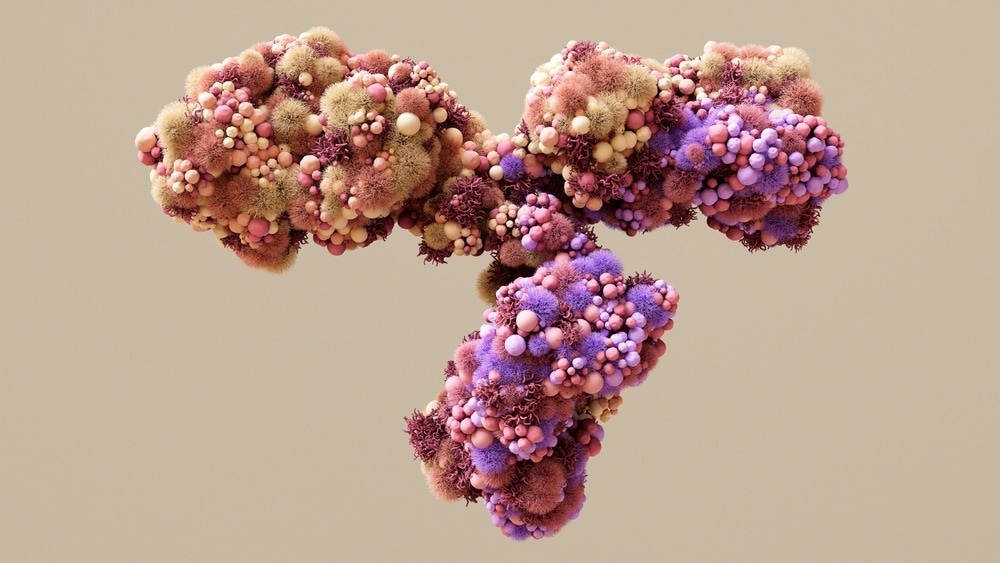Proteins are organic macromolecules that participate in gene regulation and cell metabolism. Additionally, they serve as powerful biological shields in protecting the body’s immune system and homeostasis.

Study: Nanoengineering and green chemistry-oriented strategies toward nanocelluloses for protein sensing. Image Credit: Design_Cells/Shutterstock.com
Advancements in nanotechnology boosted the application of nanomaterials such as protein sensing, protein detection, and its examination in trace amounts. Nanocellulose has advantages over proteins due to its low cytotoxicity, high biocompatibility, good durability, high specific area, and marketability.
An article published in the journal Advances in Colloid and Interface Science discussed the recent progress in protein sensing and protein detection using nanocellulose as the biosensor. Additionally, nanocellulose was highlighted as a super biosensor for protein detection, protein sensing, and analysis of diverse polypeptides from body fluid and simulated body fluid. Ultimately, promising prospects, new opportunities, and approaches in biomedical governance were proposed.
Nanocellulose Towards Proteins Sensing
Proteins are molecules made of amino acids. The amino acid sequence determines a polypeptide’s primary structure, participating in various biochemical activities. Precise protein sensing and protein detection provide information on physicochemical properties and molecular mechanisms in vital movements.
Various existing protein detection technologies are time-delayed, labor-consuming, and require large-scale and complex equipment. Biosensors are advanced inspection technologies that are cost-effective, highly sensitive, efficient, target-specific, and easy to operate. Biosensors help obtain pivotal information on biological activities, aiding in disease diagnosis, food safety, environmental monitoring, food quality control, and industry security.
Cellulose nanofibers (CNFs), bacterial nanocelluloses (BNC), and cellulose nanocrystals (CNCs) are types of nanocelluloses, obtained from raw celluloses via mechanical or chemical approaches. The nanomaterials derived from nanocellulose have similar advantages as native nanocellulose, along with outstanding photonics, surface chemistry behavior, and colloidal performance.
Nanocellulose, with its superior properties, is used in the biosensing field. The market value of nanocellulose is expected to reach $660 million by 2025. Besides being an ideal host substrate, it is applied as a biological template and scaffold in various biosensors, including medical/clinical diagnostics, environment monitoring, electronic devices, and more. Particularly, hybrid materials derived from nanocellulose have the upper hand in detecting medical analytes.
Types of Nanocelluloses and Their Nanoengineering
CNFs
Enhanced interactions between nanofibrillated cellulose and surrounding species endow the biosensors with high biomedical performance for disposing of high amounts of contaminants. Nanofibrillated cellulose can be prepared from various substrates, including wood, fungi, bacteria, algae, and animals. Due to the use sodium chloride and potassium hydroxide are used to remove lignin and matrix, respectively, from wood, nanofiber lines show intracellular cellulose.
Cellulose-based aligned assemblies consisting of nanofibrillated cellulose and exfoliated graphene were generated during the growth of graphene monolayers. These biomimetic composites showed good tensile strength. The biomimetic nanocomposites constructed by Linder et al. were derived from the native nanofibrillated cellulose, proteins, and exfoliated graphite. The protein molecules consisted of hydrophobic blocks linked to graphene and cellulose-binding block through genetic engineering.
BNCs
Bacterial nanocellulose is a building block used in various bio- and injectable devices. This nanocellulose is derived from various bacterial species under specific conditions. The bacterial nanocellulose is used as a barrier against ultraviolet (UV) light due to its crosslinking network.
Various inorganic and organic nitrogen resources were used to prepare bacterial nanocellulose. The nanocellulose derived from bacteria is advantageous over three-dimensional (3D) nanofibrous structure in terms of high purity, endowing great potential for protein detection, including good reusability and stability.
Based on the performance of polymers, incorporation of polymer networks into bacterial nanocellulose-based nanostructures can modulate the physical and chemical properties. Additionally, controlling the amount of polysaccharides in the growth of the culture medium can also modulate the physical properties of nanocellulose.
CNCs
CNCs are highly crystalline, exhibiting needle or rod-like morphologies with dimensions less than 100 nanometers. The raw materials used in the preparation of CNCs determine the geometrical dimensions of the final products.
Modifying nanocellulose surfaces with grafted polymer enhances their ability to remove contaminants and stabilizes the nanocellulose network. Polymer grafting can be realized through grafting-from, grafting-to, and grafting-through methods. Moreover, linking the polymer’s end group with linkable functionalities to the hydroxyl functional group of nanocellulose can generate polymer-cellulose composites favorable for protein sensing.
Conclusion
Overall, materials based on nanocellulose provide a suitable platform for protein sensing. Nanotechnology and green strategies facilitated the integration of nanocellulose into polymers, metal oxide, metals, carbon, and many more for their application in biosensors used in protein sensing and protein detection.
Nanocellulose material serves as support matrices and stimuli-responsive components and retains the favorable properties of native cellulose. In addition to the hydroxyl side group, nanocellulose material has a large specific surface area and a high aspect ratio. The hydroxyl side group in nanocellulose promotes self-assembly, helps with dispersion within polymer matrices, and controls particle-particle/particle-matrix bond strengths.
Thus, chemical modification of nanocellulose endows its composites with sensing properties used for protein detection. The combination of green chemistry with nanoengineering toward nanocellulose promoted protein sensing and protein detection even in trace amounts.
Reference
Zha, R., Shi, T., He, L., Zhang, M. (2022). Nanoengineering and green chemistry-oriented strategies toward nanocelluloses for protein sensing. Advances in Colloid and Interface Science, 308. https://www.sciencedirect.com/science/article/pii/S0001868622001609
Disclaimer: The views expressed here are those of the author expressed in their private capacity and do not necessarily represent the views of AZoM.com Limited T/A AZoNetwork the owner and operator of this website. This disclaimer forms part of the Terms and conditions of use of this website.